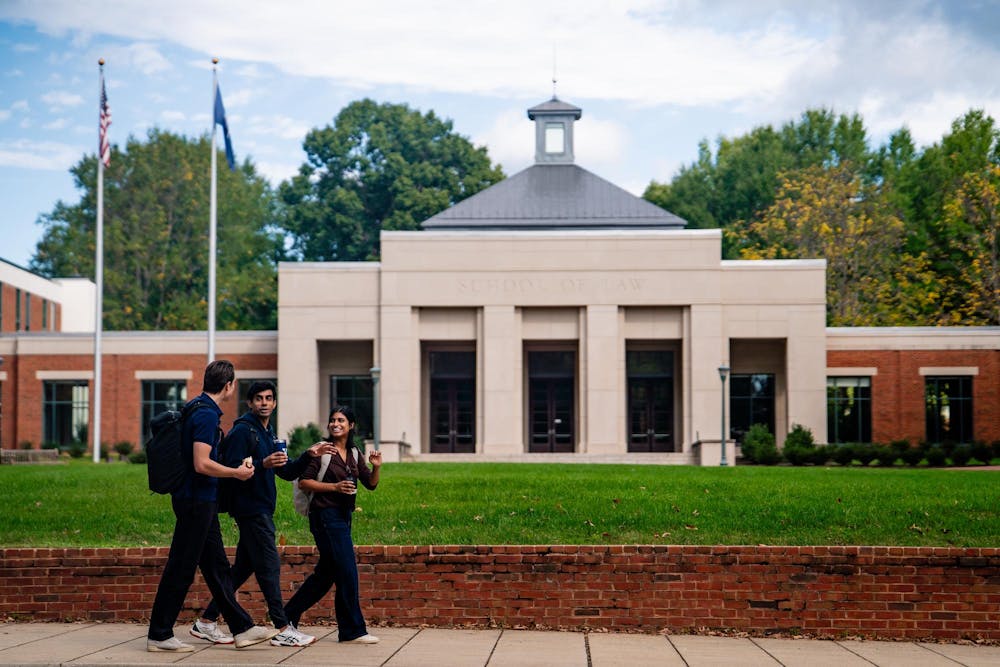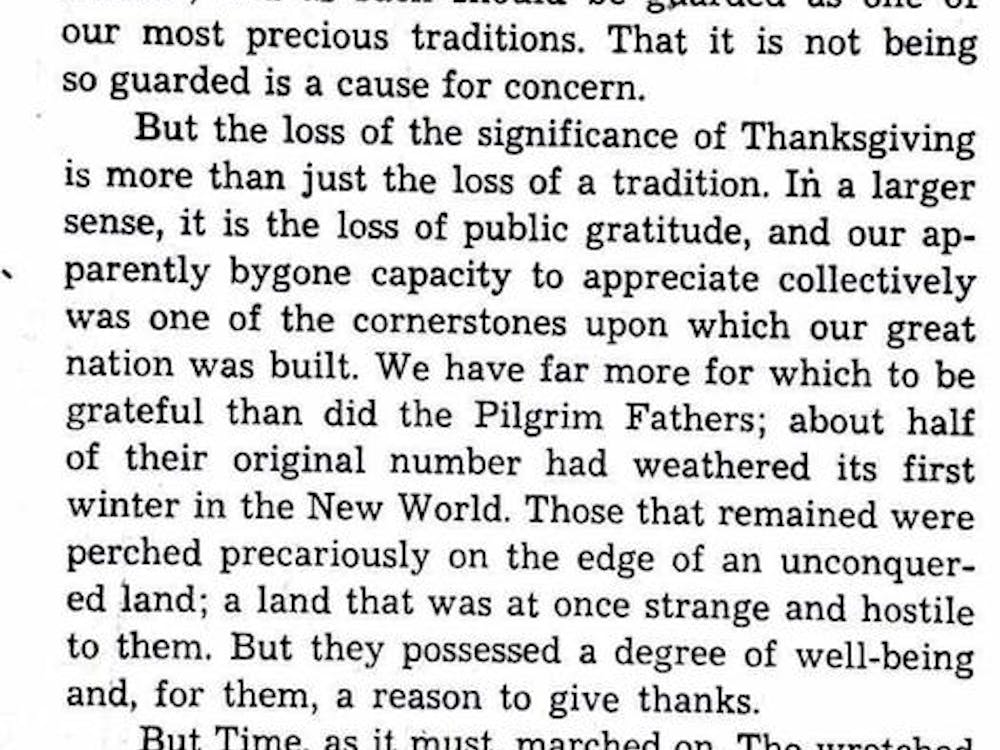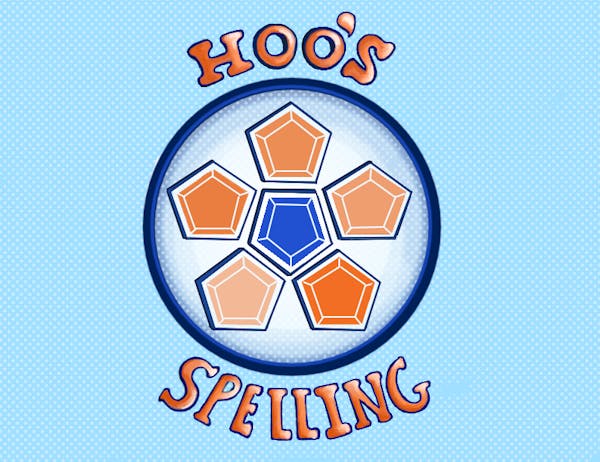Since 2002, the University’s School of Law has operated under a self-sufficient funding model, declining state support while remaining a public institution. And while that tuition is comparable to other law schools with similar prestige, some pre-law students say that approach may create a barrier to affordability at the Commonwealth’s premier law school.
The School of Law is currently ranked fourth in the nation, according to U.S. News & World Report, and charges $106,670 for the 2025-26 academic year in total cost of attendance. Out-of-state tuition is only $3,000 higher than in-state.
By comparison, according to the Education Data Initiative, the average annual tuition for law schools nationwide is $46,029, and public law schools typically cost significantly less than private institutions. On average, in-state residents nationally pay about $25,409 less for public law schools per year and $76,227 less over a traditional three-year program.
The School of Law’s move toward financial self-sufficiency dates back to decades of declining state support. As the Virginia General Assembly cut higher education funding through the 1990s and early 2000s — including over $290 million in reductions after the dot-com crash and the Sept. 11, 2001 terrorist attacks — the School of Law sought greater stability.
In 2002, it adopted a self-sufficient model that ended direct state appropriations in exchange for full tuition and budgetary autonomy, while continuing to contribute a portion of its revenue to the University for administrative costs. Because it does not accept state funding, it also does not have to maintain a specified percent of in-state students — the School of Law’s class of 2026 is majority out-of-state. Despite all of this, the Law School remains a public institution, as it is still part of the University and governed by the Board of Visitors.
Arising out of this agreement is the question of cost. Two decades later, students and alumni continue to debate the model and if it is worth the cost.
Elysse Stolpe, class of 2014 Law alumna, current senior assistant Commonwealth’s Attorney in Waynesboro and lecturer at the School of Law, said her own debt heavily influenced her early career choices.
Stolpe explained that this financial reality not only shapes individual choices — like choosing whether to work at a large law firm in a city, or “big law” — but also limits the pipeline of lawyers into smaller markets.
“When you have taken out the student loans that are like big law, you need a big law salary to repay. It makes it harder to go into a smaller market … we are hurting for lawyers in small jurisdictions,” Stolpe said. “I wish [students] could afford to … but it’s a barrier for being able to go into private practice in a non-big law setting.”
Mary Wood, chief communications officer at the School of Law, said the School of Law’s tuition should be understood in the context of other top-ranked programs.
“Though the Law School is at the top of the national rankings, our tuition is below both the median and the average for the country’s best law schools,” Wood said.
Among the top four ranked law schools — Yale University, Stanford University, the University of Chicago and U.Va. Law — U.Va. has the lowest total cost of attendance. The highest is Stanford, with a total cost of $121,194 for the 2025-2026 academic year. U.Va. Law is the only public university program among the top four.
Wood also emphasized that the tuition figure does not reflect the substantial financial aid the School of Law distributes to students each year, as it distributes around $26 million in scholarships to its 950 students per year. She added that 10 percent of students at Law are first-generation college graduates and 25 percent are the first in their family to attend graduate school.
Students who plan to apply to law schools after finishing their undergraduate education say high tuition is an important factor, but one of many considerations.
Fourth-year College student Catarina Coelho, who is considering law school, said that cost does play a role when it comes time to decide on a law school, but notes that it is not just tuition that must be accounted for.
“I think cost is definitely a major factor because I don't think it's just about tuition, it's also about application fees or LSAT prep, deposits and the reality of living expenses for three years,” Coelho said. “For a lot of students, those upfront costs and the uncertainty around aid can make the process feel a little out of reach.”
Second-year College student Ying Lei Pham, who plans to attend law school, said that whether one should take on more debt or not is incredibly important when considering which law school to attend.
“When people are already in debt from undergraduate education and you're looking to further your education, I think that cost plays a really, really large role, not only for me, but for a lot of students,” Pham said. “You have to consider what else can you take on? Can you take on more debt? Will the outcome or the future career outweigh the cons of paying for that?”
According to a survey conducted by the National Association for Law Placement, an association of over 3,000 legal career professionals who advise law students, lawyers and law schools, the median salary for first-year associates in private law firms is $155,000, while entry-level public interest or legal services lawyers often earn in the $60,000–70,000 range. Pham said this creates a strain for those seeking careers in the public sector.
To ease that strain, many graduates rely on two programs — the federal Public Service Loan Forgiveness Program, which forgives loans after 10 years of qualifying public service payments, and the School of Law’s Virginia Loan Forgiveness Program, which provides direct assistance to graduates earning under $100,000. The University’s program, funded largely through alumni donations, can cover most or all of a graduate’s monthly loan obligations under income-driven repayment plans.
Stolpe said the program was essential in her own decision to leave a Washington law firm for a position in prosecution, as her monthly loan burden shifted dramatically once she qualified for assistance by taking a $100,000 pay cut, with her student loan repayment shifting from $300 to $500 a month instead of $2,500.
“U.Va. Law has an assistance program … which is huge and very valuable and rare, because that is helping their graduates fill a need for some of these smaller jurisdictions or underserved legal areas to be able to go in and take those jobs despite having student loan debt,” Stolpe said.
Wood, the Law spokesperson, also pointed to the Law School's career outcomes, arguing that strong employment prospects help graduates manage debt regardless of sector.
“After graduation, most students go into private practice, where the base starting salary is $225,000 per year,” Wood said. “The Law School supports graduates pursuing public service careers through scholarships, guaranteed funding for every student in a summer public-service job, postgraduate fellowships and loan forgiveness.”
Some students believe that because the University’s School of Law is highly ranked nationally, that the prestige outweighs the cost, including second-year College student Evangelia Karoussos.
“[The law school] is top four in the country. I'm not gonna sit here and say that the price isn't a lot,” Karoussos said. “But I do think that the name of the school and the quality of education I'll receive will make it worth it”
Stolpe added that the prestige is tied not only to its national reputation but also to the support it offers students after graduation.
“U.Va. is unique in that it provides so much support for students who are looking to go into public interest after graduating, and if it had been another law school that did not have [that], I probably would not have been able to afford to go into public practice,” Stolpe said.
All students agreed that a law school should support first-generation and low-income students.
“I think that for first-generation students and lower-income students, those high costs narrow those paths, even though scholarships help, I think there's definitely gaps that can leave students juggling living costs and other responsibilities,” Coelho said. “Even though access sometimes is possible, I don't think it's so much equally felt across the field.”
As students weigh cost and return on investment, the School of Law continues to navigate the balance between prestige, accessibility and financial independence, a model that has defined its identity for more than two decades.







